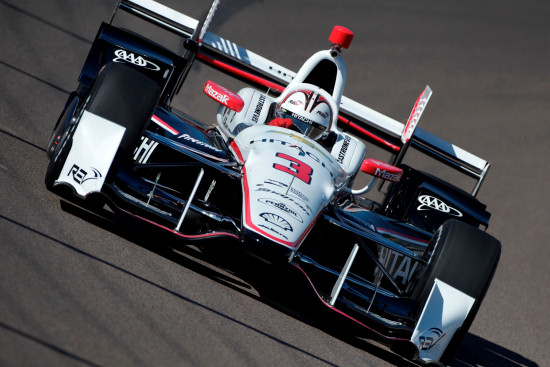The Way It Is/ Facing some hard factsby Gordon Kirby |
 I was intrigued to read a story last week written by Brock Yates in Car & Driver back in 1971. Yates wrote about the difficulties auto racing was facing at the time to establish a serious foothold in the rapidly growing world of TV sports. Through some thorough reporting he demonstrated that motor racing was among the most expensive sports to televise with only meager returns in ratings. Yet the TV ratings Yates quoted for a few key races televised by ABC in 1970 would make today's sanctioning bodies salivate with unrestrained glee.
I was intrigued to read a story last week written by Brock Yates in Car & Driver back in 1971. Yates wrote about the difficulties auto racing was facing at the time to establish a serious foothold in the rapidly growing world of TV sports. Through some thorough reporting he demonstrated that motor racing was among the most expensive sports to televise with only meager returns in ratings. Yet the TV ratings Yates quoted for a few key races televised by ABC in 1970 would make today's sanctioning bodies salivate with unrestrained glee.
Both the Alabama 500 at Talladega won by Pete Hamilton and World 600 at Charlotte won by Donnie Allison were among only a handful of races televised live in 1970. They pulled a 10.0 and a 6.3 rating respectively. Mosport's Can-Am race, also televised live and won by Dan Gurney aboard his deceased friend Bruce McLaren's car, drew a 4.5 rating, while the tape delayed Monaco GP, featuring Jochen Rindt's famous last corner pass of Jack Brabham, pulled a 3.8. Again, if either a NASCAR, Formula 1 or IMSA race were to pull such TV numbers today everyone would be doing backflips while beating their chests in celebration and self-admiration. But as we all know, it ain't so. The sad story of auto racing's steady decline in the TV market continued at Atlanta on the last weekend in February as NASCAR's second Cup race of the year drew the lowest rating in sixteen years going back to 2001 since Fox has televised NASCAR's Cup series. Atlanta earned a 3.7 rating, down 27 percent from last year's 5.1.  © Team Penske Next weekend IndyCar's season kicks-off in St. Petersburg with the opening round televised by ABC who will also cover the 100th Indy 500, as usual, plus the Indy road course race two weeks before and the dual races in Detroit the weekend after the 500. All the other IndyCar races are the property of NBC with nine races on NBC Sports and two mid-summer races on CNBC. As we all know, IndyCar has done poorly in recent years on both ABC and NBC. IndyCar tried to trumpet a small increase in last year's ratings but the overall numbers remain insignificant and the business of selling sponsorship for even the Indy 500, let alone the other races, is becoming increasingly difficult. The big hope this year, of course, is that the 100th running on the 500 will create more interest and provide a boost for the rest of the season. But a rough road lays ahead. Over the course of many years IndyCar has been completely outstripped by NASCAR in TV rights fees and additional coverage beyond the races. Wall to wall NASCAR coverage is available to anyone who wants it, but IndyCar is a mere blip on the screen desperately in need of more TV space. But with so little leverage or interest, none of that is likely to happen. Today, NASCAR pulls in a total of $6.8 billion in rights fees from NBC and Fox. NBC is paying NASCAR $4.4 billion over ten years for televising the second half of the season with Fox ponying up $2.4 billion for eight years to televise the season's first half. IndyCar's TV income isn't published but it's said to be around $20 million, a mere drop in the bucket compared to NASCAR or to F1's massive collective worldwide rights fees. This lack of income is a serious problem for IndyCar's longterm future. One of the major issues IndyCar must confront is the need to develop a more open and interesting technical formula, but there just isn't anywhere near enough money to entertain such a goal. Probably the most important reason Derrick Walker decided to quit IndyCar last year was because he faced resistance both from within IndyCar and the teams about his ideas for developing a new car. So much so, in fact, that Walker never formally presented his ideas to either IndyCar or the teams. It's a sad fact that, Indy 500 aside, IndyCar has become a minor league sport. Will it ever regain major league status? A thorough plan for the future on all fronts is required, plus many years of unrelenting hard work. |
|
Auto Racing ~ Gordon Kirby
Copyright ~ All Rights Reserved |
